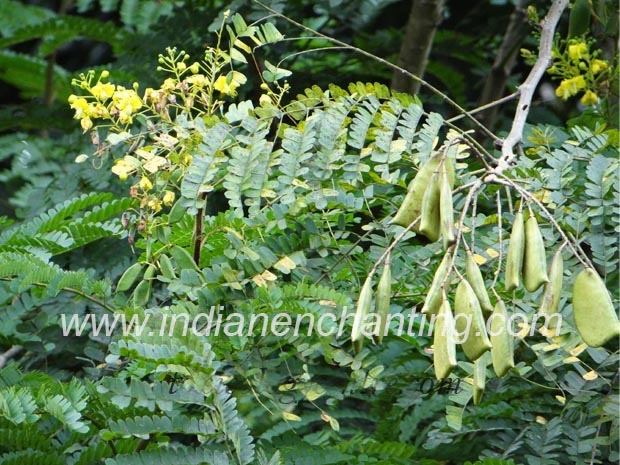
Caesalpinia sappan Linn
Genus: Caesalpinia
Botanical name: Caesalpinia sappan Linn
PLANT NAME IN DIFFERENT LANGUAGES
Sanskrit: uchandana, Lohita, Patanga, Ranjana, Patranga
English: Japan wood, Sappan wood, Brazil wood
Hindi: Patamg, Bakam
Malayalam: Pathimugam, Chappgam
MEDICINAL PROPERTIES
Japan wood is a small thorny tree, 6-9 m in height and 15-25 cm in trunk diameter with a few prickly branches. Leaves are double-compound, alternately arranged, 20-45 cm long, 10-20 cm broad, with 8-16 pairs of up to 20 cm long side-stalks. Side-stalks are prickles at the base and with 10-20 pairs of oblong, 10-20 mm x 6-10 mm long leaflets, very oblique at base, rounded to notched at the tip. Yellow flowers are borne panicles in leaf axils and at the end of branches. Flowers fragrant, 2-3 cm long, 5-merous. Stamens are waxy-white, filaments densely woolly at the base. Fruits are woody pods, compressed with a hard recurved short beak, with 3-4 seeds. The heartwood which is used in medicine is light yellow when freshly cut, but it quickly changes to red. The color diffuses out easily in hot water. In about 7-10 hours the extract becomes deep orange in color. Sappan-wood was a major trade good during the 17th century, when it was exported from Southeast Asian nations aboard red seal ships to Japan.
The heartwood of Japan wood is used diarrhea, wounds, skin diseases, diabetes and Stomaceache due to snake bite.
